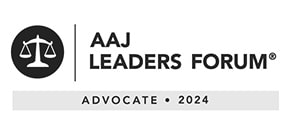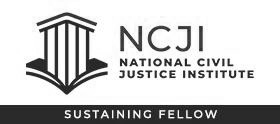What do you do when a U.S.-based shoe glue manufacturer floods the Central American market with more of its toxic product than the legitimate market can absorb—even after learning the excess is being sold on the black market to adolescent children? You seek out a law firm bold enough to take them to task.
Peddling Toxic Glue to Children
At the same time that non-governmental organizations (NGOs) were struggling to get homeless children off the streets in El Salvador, Guatemala, and Honduras, NGO workers discovered that multinational glue companies, including a US manufacturer, were deliberately turning a blind eye to the rising number of Central American adolescents addicted to sniffing glue.
The shoe glue was a toxic cocktail of chemicals, yet the U.S. multinational company marketed it in small cans with holes in the center, making it easy for children to sniff directly out of the can. To capture the children’s attention, the company placed cute cartoon characters on the label. Children in Honduras were so closely associated with using the U.S. manufacturer’s product that they were known as Resistoleros, named after the brand name of the glue − Resistol.
Scott Hendler Documents Children’s Neurological Damage
Casa Alianza, one of the NGOs working in the region, sought out Scott Hendler and implored him to get involved. In Honduras and El Salvador, Scott spent evenings walking the streets to meet the most severely affected children. The euphoria from sniffing glue, they told him, kept away the hunger and the cold.
Scott assembled a team of specialists to evaluate the most severely affected children. He traveled to Honduras with a neurologist, an industrial hygienist, and a team of neuropsychiatrists. They joined forces with a U.S. pediatrician working with Casa Alianza in Honduras. The doctors spent days doing physical exams and psychological assessments on 40 children. The team then traveled to San Salvador and conducted similar evaluations on 25 additional children.
Of the 65 children evaluated, Scott and his team chose the 12 children with the most serious symptoms. Enlisting the help of a U.S. Senator, they obtained passports and visas for the children to travel to Duke University Medical Center for MRIs, CT Scans, and Auditory Evoked Response Tests to determine the extent of the neurological damage caused from inhaling the toxic shoe glue.
The children ranged in age from 13 to 17. To chaperone them, Scott recruited his sister Stacey Hendler Ross, a fluent Spanish speaker. The kids had never been on an airplane or stayed in a hotel. Some had never slept in a bed. In fact, some of the children chose to sleep on the hotel room floor instead of the bed. For breakfast, lunch, and dinner, they only wanted to eat dessert.
The tests revealed that the children’s brains had measurable damage. In addition, they had peripheral neuropathies that prevented them from controlling movement of their limbs. The neurological damage exceeded anything researchers had ever documented before.
In Scott’s assessment, they had damages, they had causation and they had liability. But would the U.S. courts provide a forum?
Scaling a Mountain of Legal Hurdles
As a test case, Scott filed the first lawsuit on behalf of the family of 16-year-old Joel Linares who died from kidney failure after years of addiction to Resistol. The lawsuit was filed in federal court in St. Paul, Minnesota, where the glue company is based. The defendant filed the anticipated cookie-cutter motion to dismiss under the doctrine of forum nonconveniens. But the manufacturer also filed a peculiar motion contesting federal court jurisdiction. The manufacturer claimed that because it had a subsidiary company in Guatemala, it was also a citizen of Guatemala, and therefore the federal court lacked jurisdiction to hear the case, even though the lawsuit was filed in the jurisdiction of the company’s headquarters. Although the argument made no sense, the federal court in the manufacturer’s hometown found it was an expedient and convenient way to reject the case and dismissed it for lack of jurisdiction.
Scott and his team made the difficult strategic decision not to appeal because they concluded that, even though they’d likely reverse the ruling, they would only return to a clearly hostile federal judge. More importantly, they realized that by making and prevailing on this argument, the glue company disqualified itself from federal jurisdiction for future cases of this kind.
As they prepared to file additional cases, however, the litigation ran into new hurdles and stalled over a different question: Who had legal standing to represent the interests of children from different countries?
Ultimately, the legal challenges to maintaining a case in the U.S. on behalf of homeless adolescent children from three different foreign countries proved too great. Still, from Scott’s viewpoint, the fight was worth it. “The threat of future litigation alone was enough to force the glue manufacturer to change its distribution policies in Central America,” said Scott. “Because of the continued success we’ve had in other toxic tort litigation, we’re fortunate to be able to take on important cases—even if they don’t always yield the financial compensation that our clients deserve. Our involvement in this case nevertheless provided some measure of deterrence to ongoing corporate exploitation of Central American children that otherwise would not have happened. And we’re proud of that result.”













